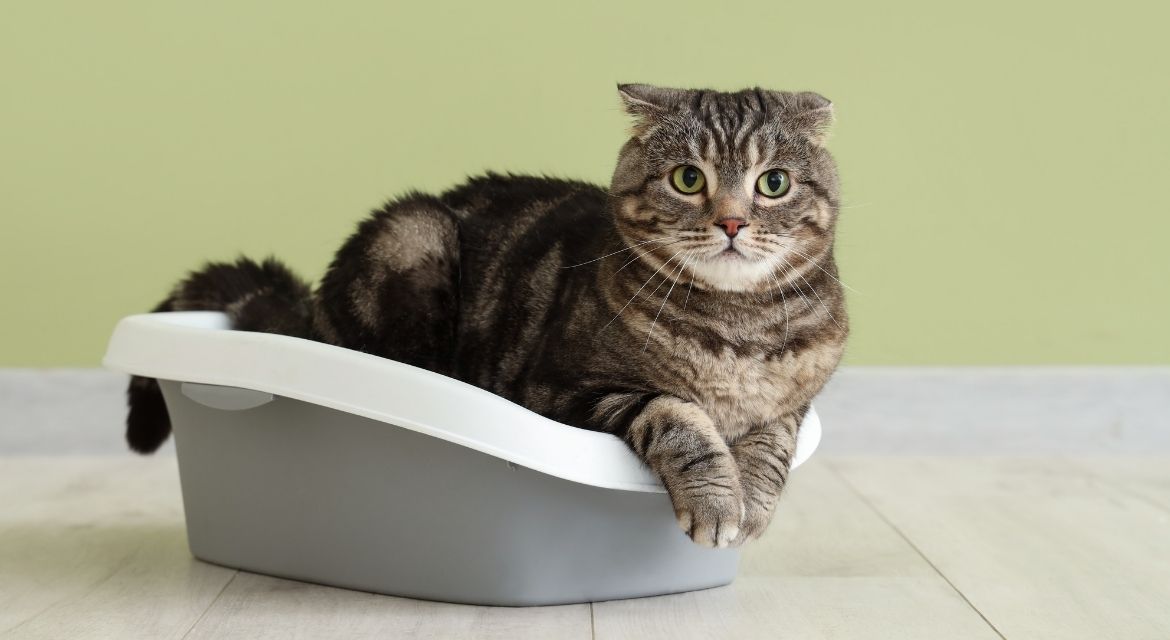 21 May
21 MayThe Complete 2025 Guide on How to Litter Train a Kitten: Expert Tips for Success
Table of Contents
Bringing home a new kitten is an exciting time filled with playful moments and the beginning of a beautiful companionship. However, one of the first challenges many new cat parents face is how to litter train a kitten properly. Successful litter training is essential not only for maintaining a clean home but also for ensuring your kitten’s health and happiness. This comprehensive guide will walk you through everything you need to know about how to litter train a kitten effectively, from understanding feline behavior to troubleshooting common issues.
Understanding the Basics of Kitten Litter Training
Why Kittens Need Proper Litter Training
Learning how to litter train a kitten properly sets the foundation for good bathroom habits throughout your cat’s life. Unlike puppies, kittens have a natural instinct to eliminate in soft, loose material that they can dig in and cover afterward. This instinct makes litter training generally easier than housebreaking dogs, but it still requires patience, understanding, and consistency.
Proper litter training prevents unwanted accidents around your home, reduces odors, and minimizes the risk of health issues that can arise from poor sanitation. Furthermore, establishing good litter box habits early helps prevent behavioral problems that might develop later, such as inappropriate elimination due to stress or anxiety.
When to Start Litter Training Your Kitten
Timing is crucial when considering how to litter train a kitten successfully. Most kittens begin showing interest in using a litter box around 3 to 4 weeks of age. By the time kittens are ready to be adopted (typically 8-12 weeks old), they should have basic litter box skills already in place, especially if they were raised with their mother who demonstrated proper behavior.
If you’ve adopted a very young kitten or are fostering orphaned kittens, you may need to start the training process earlier. In these cases, understanding developmental milestones becomes especially important when learning how to litter train a kitten effectively.
Understanding Your Kitten’s Natural Instincts
To master how to litter train a kitten, it’s essential to understand their natural behaviors. Cats are naturally clean animals that prefer to keep their living areas separate from their elimination areas. This instinct drives them to bury their waste, a behavior that evolved to hide their scent from predators in the wild.
Young kittens often give clear signals when they need to eliminate, including:
- Sniffing the ground intently
- Pawing or scratching at the floor
- Circling or crouching in corners
- Retreating to quiet, secluded areas
Recognizing these signs will help you guide your kitten to the litter box at the right moment, which is a fundamental aspect of how to litter train a kitten properly.
Setting Up for Success: Litter Box Essentials
Choosing the Ideal Litter Box for Your Kitten
When learning how to litter train a kitten, selecting the right litter box is critical. Consider these factors:
Size and Height: For young kittens, choose a box with low sides that allow easy entry and exit. As a general rule, the box should be about 1.5 times the length of your kitten (not including the tail). Remember that your kitten will grow, so you may need to transition to a larger box as they mature.
Open vs. Covered: While covered boxes help contain odors and provide privacy, many kittens initially prefer open boxes because they:
- Offer better visibility of surroundings (important for security)
- Provide better ventilation
- Allow easier access without navigating an entrance
You can introduce a covered box later once your kitten is confidently using an open box.
Materials and Features: Plastic boxes are common and easy to clean, but some innovative options include:
- Disposable cardboard boxes (good for travel)
- Sifting litter boxes (for easier cleaning)
- High-sided boxes with low entry points (to contain litter scatter while maintaining accessibility)
For very young kittens just learning how to use a litter box, a shallow tray or even a baking dish might be the perfect temporary solution until they grow enough to use a standard box.
Selecting the Right Litter Type
The type of litter you choose plays a significant role in how to litter train a kitten successfully. Cats have preferences about litter texture, scent, and consistency. Here’s a breakdown of common options:
Clumping Clay Litter:
- Forms solid clumps when wet, making waste removal easier
- Good odor control
- Heavy and can create dust
- Not recommended for kittens under 8-10 weeks as they may ingest it
Non-clumping Clay Litter:
- Less expensive than clumping varieties
- Absorbs moisture without forming clumps
- Requires more frequent complete changes
- Generally safer for very young kittens
Natural/Biodegradable Options:
- Made from materials like corn, wheat, paper, wood, or walnut shells
- Usually less dust and potential allergens
- Environmentally friendly
- Various textures available (some kittens have strong preferences)
Crystal/Silica Gel Litter:
- Excellent odor control
- Long-lasting
- Low tracking around the house
- More expensive than other options
When determining how to litter train a kitten effectively, it’s often best to start with the same litter type the kitten used previously (at the breeder or shelter) to maintain consistency. If this information isn’t available, a fine-grained, unscented clumping litter (for kittens over 8 weeks) or non-clumping clay litter (for younger kittens) is typically a safe choice.
Optimal Placement of Litter Boxes
Strategic litter box placement is a key component of how to litter train a kitten properly. Consider these guidelines:
Accessibility: Place boxes in easily accessible locations that your kitten can find without difficulty. During initial training, keep the kitten confined to a smaller area with the box nearby.
Privacy: Choose quiet, low-traffic areas where your kitten won’t be disturbed. Avoid placing boxes near loud appliances like washing machines or furnaces, as sudden noises might startle your kitten and create negative associations.
Away from Food and Water: Cats naturally prefer to eliminate away from their eating areas. Keep litter boxes at least 3-5 feet away from food and water bowls.
Multiple Locations: If you have a multi-level home, place at least one box on each floor to ensure your kitten always has easy access.
Visibility: While privacy is important, the box should be visible and accessible to your kitten at all times, especially during the initial stages of litter training.
The general rule for the number of litter boxes is one per cat plus one extra. Even with just one kitten, having two boxes can be beneficial during training and prevents accidents if one box becomes inaccessible.

Step-by-Step Guide: How to Litter Train a Kitten
Day One: Introduction to the Litter Box
The first 24 hours are crucial when learning how to litter train a kitten. Follow these steps for a smooth introduction:
- Prepare the Space: Set up the litter box in your chosen location before bringing your kitten home. Fill it with 2-3 inches of litter enough for digging but not so much that your small kitten struggles to move through it.
- First Introduction: As soon as you bring your kitten home, after allowing a brief period to explore their safe room, gently place them in the litter box. Take their front paws and mimic a gentle pawing motion in the litter. This helps them understand the texture and purpose.
- Timing is Everything: Place your kitten in the litter box during key times when they’re likely to need it:
- Immediately after waking up
- About 20 minutes after eating
- After active play sessions
- Before bedtime
- Positive Reinforcement: When your kitten uses the box successfully, offer quiet praise and perhaps a small treat. Keep reinforcement gentle too much excitement might distract them from completing their business.
- Monitoring: On the first day, closely observe your kitten for signs they need to eliminate, and guide them to the box promptly if needed.
Establishing a Routine for Consistent Success
Consistency is the cornerstone of effectively learning how to litter train a kitten. Follow these guidelines to establish a reliable routine:
Regular Feeding Schedule: Feed your kitten at consistent times each day. Regular meals lead to predictable elimination patterns, making it easier to anticipate when your kitten will need the litter box.
Box Maintenance Schedule: Create and stick to a regular cleaning routine:
- Scoop waste at least twice daily
- Replace litter completely once a week (or as needed)
- Wash the box with mild soap and water monthly
- Replace plastic boxes every 6-12 months as they can absorb odors over time
Environmental Consistency: Avoid moving the litter box frequently, especially during the training period. Sudden changes can confuse your kitten and lead to accidents.
Monitoring Access: During training, ensure your kitten always has clear, unobstructed access to their box. Keep doors open or install cat doors if necessary.
Positive Reinforcement Techniques
Positive reinforcement is much more effective than punishment when learning how to litter train a kitten. Here’s how to use it effectively:
Immediate Praise: Offer gentle verbal praise immediately after your kitten uses the box correctly. The timing of the reinforcement is crucial praise must come while they’re still in or just leaving the box to create the association.
Treats and Rewards: Small, healthy treats can be powerful motivators. Offer a tiny treat within 30 seconds of your kitten using the box successfully.
Physical Affection: If your kitten enjoys being petted, a gentle stroke or scratch behind the ears can reinforce good behavior.
What Not to Do: Never punish your kitten for accidents or mistakes. Negative responses like scolding, spraying with water, or rubbing their nose in accidents will only create fear and anxiety, potentially leading to litter box aversion.
Recognizing Progress in Litter Training
Understanding the typical progression of litter training helps set realistic expectations about how to litter train a kitten successfully:
Week 1: Your kitten may have a few accidents as they learn, especially if they’re in a new environment. Success might look like using the box 50-75% of the time.
Weeks 2-3: With consistent guidance, most kittens show significant improvement, using the box reliably when they can access it easily.
By 1 Month: Most kittens should be consistently using their litter box with few to no accidents, provided the box is appropriately maintained and accessible.
Remember that progress isn’t always linear. Occasional setbacks are normal, especially during times of stress or change. Patience and consistency are key elements of how to litter train a kitten effectively.
Addressing Common Challenges in Kitten Litter Training
When Your Kitten Avoids the Litter Box
If your kitten seems reluctant to use the litter box despite your best efforts in learning how to litter train a kitten, consider these potential causes and solutions:
Litter Preferences:
- Some kittens have strong preferences about litter texture, scent, or depth
- Try offering different types of litter in separate boxes to determine your kitten’s preference
- Experiment with unscented varieties if your kitten seems sensitive to fragrance
Box Issues:
- The box might be too deep, making it difficult for small kittens to enter
- The location might feel unsafe or too exposed
- Consider trying different box styles (covered vs. uncovered)
Environmental Factors:
- Loud noises near the box location might create negative associations
- Other pets might be preventing access to the box
- The box might be too close to feeding areas
Cleanliness Concerns:
- Many kittens refuse to use a dirty litter box
- Increase cleaning frequency if avoidance occurs
- Some cats prefer a completely fresh box after even one use
Managing Accidents Effectively
Accidents happen even when you’re diligent about how to litter train a kitten. Here’s how to handle them constructively:
Immediate Response:
- Clean accidents thoroughly using enzymatic cleaners designed specifically for pet messes
- Avoid ammonia-based cleaners, which smell similar to urine and might encourage repeat marking
- Never punish your kitten for accidents this creates fear and stress without teaching proper behavior
Identifying Patterns:
- Note when and where accidents occur to identify potential patterns
- If accidents happen far from the litter box, consider adding another box in that area
- If accidents occur at specific times, adjust your routine to ensure box access during those times
Medical Considerations:
- Sudden changes in litter box habits can indicate health problems
- Watch for signs of discomfort like straining, crying while eliminating, or frequent attempts with little output
- Consult your veterinarian if accidents persist or are accompanied by other symptoms
Special Circumstances in Litter Training
Some situations require special approaches when learning how to litter train a kitten:
Very Young or Orphaned Kittens:
- Kittens under 3-4 weeks may need stimulation to eliminate
- Use a warm, damp cloth to gently stimulate the genital area after feeding
- Gradually introduce a shallow litter box as they develop
Kittens with Disabilities:
- For mobility-impaired kittens, provide extra-large boxes with very low entry points
- For visually impaired kittens, maintain consistent box locations and guide them physically until they learn the path
Traumatized or Previously Outdoor Kittens:
- May need a gradual transition from their preferred substrate (soil, etc.) to conventional litter
- Try mixing a small amount of outdoor soil with litter, gradually reducing the soil content
Multiple-Pet Households:
- Ensure each cat has their own litter box plus one extra
- Place boxes in different locations to prevent one cat from “guarding” all boxes
- Monitor interactions to ensure dominant pets aren’t preventing access
Advanced Litter Training Techniques and Considerations
Transitioning to Different Litter Types or Boxes
As your kitten grows and develops, you might want to change litter types or upgrade to a different box. Here’s how to make these transitions smooth when continuing to refine how to litter train a kitten:
Changing Litter Types:
- Make changes gradually over 7-10 days
- Start by mixing 25% new litter with 75% old litter
- Gradually increase the proportion of new litter every few days
- Monitor for any signs of reluctance or avoidance
Upgrading Litter Boxes:
- Place the new box next to the familiar one
- Maintain both boxes initially, keeping the old one accessible
- Once your kitten uses the new box consistently, you can remove the old one
- For transitions to covered boxes, you might start with the cover removed, adding it later
Travel and Temporary Situations
Maintaining litter training during travel or when staying in temporary accommodations requires special consideration:
Preparing for Travel:
- For car travel, use a small, portable litter box that fits in the carrier
- Bring familiar litter from home rather than introducing a new type
- Allow access to the litter box during extended trips (in a safe, enclosed area)
Temporary Accommodations:
- Set up a litter box immediately upon arrival
- Place it in a quiet, low-traffic area
- Bring an unwashed litter box from home if possible, as the familiar scent will help your kitten adapt
Returning Home:
- Re-establish normal routines promptly
- Monitor for any confusion or regression
- Provide extra guidance if needed
Environmental Enrichment and Litter Box Behavior
Understanding how environment affects litter box use can enhance your approach to how to litter train a kitten:
Stress Reduction:
- Provide vertical spaces (cat trees, shelves) to increase environmental security
- Establish quiet retreats where your kitten can escape household activity
- Maintain consistent daily routines to reduce anxiety
Territory and Resource Management:
- Ensure adequate resources (food, water, toys, resting areas) throughout your home
- In multi-cat households, provide multiple pathways to important resources
- Avoid forcing interactions between pets that show signs of conflict
Enrichment Activities:
- Regular play sessions help reduce stress and prevent behavioral issues
- Puzzle feeders and interactive toys provide mental stimulation
- Scratching posts offer appropriate outlets for natural behaviors
Expert Insights on How to Litter Train a Kitten
Veterinary Perspectives on Litter Training
Veterinarians emphasize several important aspects of how to litter train a kitten that often get overlooked:
Health Monitoring Through Litter Box Observation: “The litter box serves as an important health monitoring tool,” explains Dr. Elizabeth Morgan, feline specialist. “Changes in litter box habits frequency, volume, consistency, or color of waste can be early indicators of health issues. Regular scooping gives you the opportunity to notice these changes quickly.”
Substrate Safety Considerations: Dr. James Wilson, veterinary behaviorist, notes: “Very young kittens may ingest litter while learning how to use the box. For kittens under 8-10 weeks, paper-based or non-clumping clay litters are safer options as they pose less risk if ingested in small amounts.”
Medical Issues That Affect Litter Box Use: Common health concerns that might interfere with successful litter training include:
- Urinary tract infections or inflammation
- Gastrointestinal issues causing urgency
- Mobility problems making box access difficult
- Developmental delays affecting learning
Behavioral Expert Recommendations
Cat behaviorists offer valuable insights into the psychological aspects of how to litter train a kitten:
Creating Positive Associations: “The key to successful litter training is making the litter box the most attractive elimination option available,” says feline behaviorist Dr. Sandra Miller. “This means keeping it clean, accessible, and in a location the kitten finds comfortable and safe.”
Understanding Elimination Preferences: Research shows that most cats prefer:
- Fine-grained, unscented litter about 2 inches deep
- Clean boxes (scooped at least daily)
- Quiet locations with good visibility and escape routes
- Boxes large enough to turn around comfortably
Preventing Anxiety-Related Issues: “Prevention is always easier than correction when it comes to litter box problems,” explains animal behaviorist Taylor Johnson. “Creating positive experiences during kittenhood sets the foundation for lifelong good habits.”
Long-Term Success: Maintaining Good Litter Box Habits
Adapting to Your Growing Cat’s Needs
As your kitten grows into adulthood, their litter box needs will evolve. Here’s how to maintain the success of your initial efforts in how to litter train a kitten:
Size Adjustments:
- Adult cats need boxes about 1.5 times their body length
- Many commercial boxes are too small for full-grown cats
- Consider storage containers or specialized large boxes
Location Reassessment:
- Areas that worked for a kitten might become unsuitable as your cat grows
- Household changes (new furniture, renovations) might necessitate box relocation
- Always make changes gradually, moving boxes just a few feet per day
Aging Considerations:
- Senior cats may develop mobility issues requiring lower-sided boxes
- Additional boxes might be needed on each level of your home
- More frequent cleaning might be necessary as older cats can be more sensitive to box conditions
Ongoing Maintenance for a Clean and Healthy Environment
Maintaining good litter box habits requires consistent care:
Cleaning Schedule:
- Scoop at least twice daily (morning and evening)
- Change litter completely every 1-2 weeks
- Wash the box with mild soap and water monthly
- Replace plastic boxes every 6-12 months
Monitoring for Changes:
- Note any alterations in your cat’s elimination habits
- Watch for signs of discomfort, straining, or avoidance
- Consider tracking frequency of box use to establish a baseline for your cat
Environmental Management:
- Control odors through regular cleaning rather than scented products
- Position boxes away from air fresheners, scented candles, or strong household cleaners
- Maintain consistent lighting (natural or artificial) near box locations
When to Seek Professional Help
Some situations warrant professional guidance despite your best efforts in learning how to litter train a kitten:
Persistent Problems:
- Consistent avoidance of the litter box despite trying different locations and litter types
- Elimination in very specific locations (particular surfaces or rooms)
- Sudden changes in previously established good habits
Behavioral Red Flags:
- Spraying vertical surfaces (different from normal elimination)
- Signs of distress when approaching the box
- Aggression around litter box areas
Resources for Help:
- Your primary veterinarian for medical evaluation
- Certified applied animal behaviorists or veterinary behaviorists
- Certified cat behavior consultants who specialize in elimination issues
Conclusion: The Journey of How to Litter Train a Kitten
Successfully learning how to litter train a kitten is a foundational aspect of responsible cat ownership that pays dividends throughout your cat’s life. The patience and effort invested during kittenhood create habits that contribute to a harmonious household for years to come.
Remember that each kitten is unique, with individual preferences and learning pace. What works perfectly for one kitten might require adjustment for another. The key is observation, consistency, and positive reinforcement as you guide your kitten through this important developmental process.
By understanding feline instincts, providing appropriate litter box setups, establishing consistent routines, and addressing challenges promptly, you’re not just teaching your kitten where to eliminate you’re building trust and communication that strengthen your bond. The time spent learning how to litter train a kitten properly is an investment in your relationship and your shared home environment.
With the comprehensive approach outlined in this guide, you have all the tools needed to help your kitten develop excellent litter box habits that will last a lifetime.
You May Also Like :
How to Stop Dog Barking: The Complete Guide to a Quieter, Happier Pet
Comprehensive Guide to Interactive Cat Toys: Keeping Indoor Cats Happy and Healthy
Dog Grooming at Home: The Complete Guide for Dog Owners
10 Essential Dog Training Tips Every New Puppy Owner Should Know
How to Take Care of a Pet: Essential Guide to Responsible Pet Ownership
The Ultimate Guide to Cat Playtime: Why Play Is Essential for Your Feline’s Health and Happiness
How to Successfully Work from Home with Pets: A Comprehensive Guide
The Mental Health Benefits of Having a Dog: What Every Pet Owner Should Know
How to Groom a Puppy for the First Time: Step-by-Step Guide
Quick Solutions for Daily Pet Care: Simple Strategies for a Happier Pet and Easier Routine




